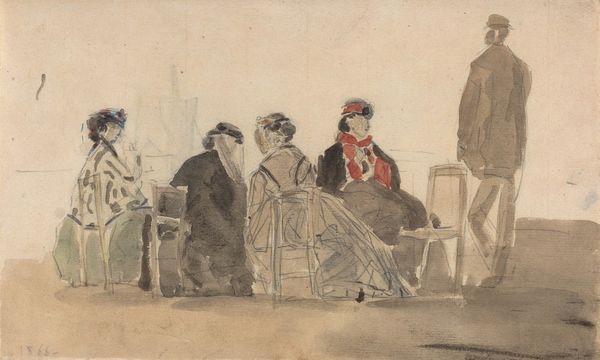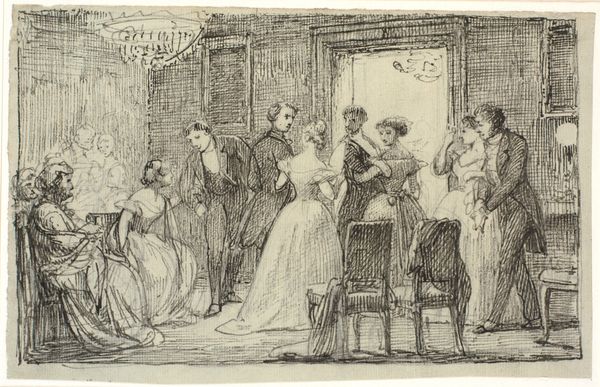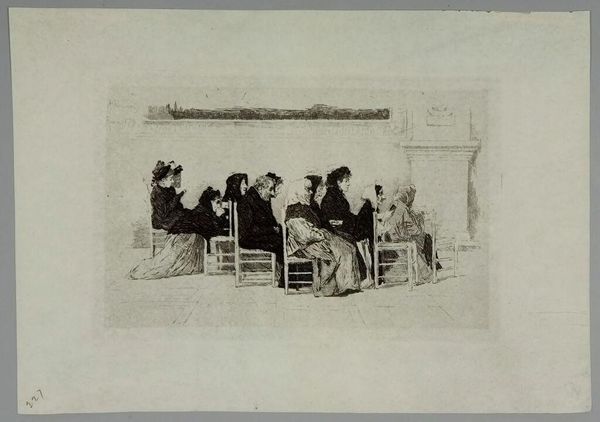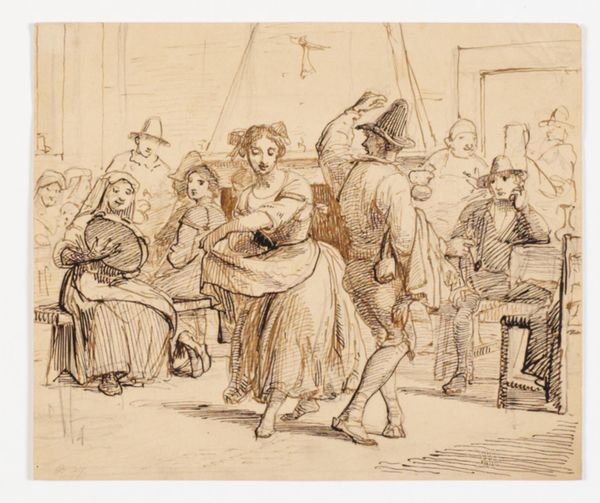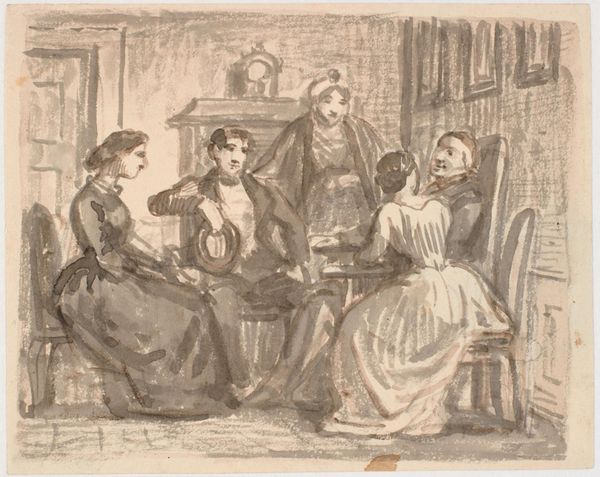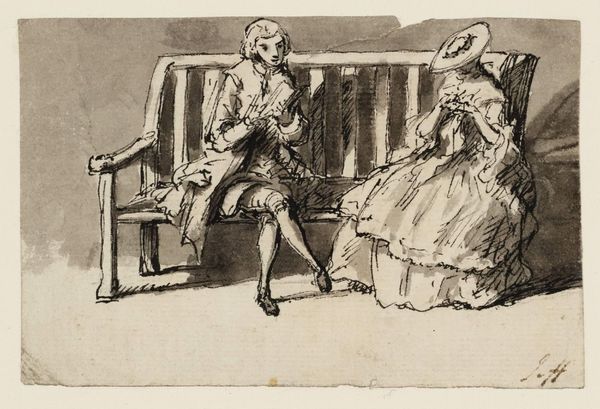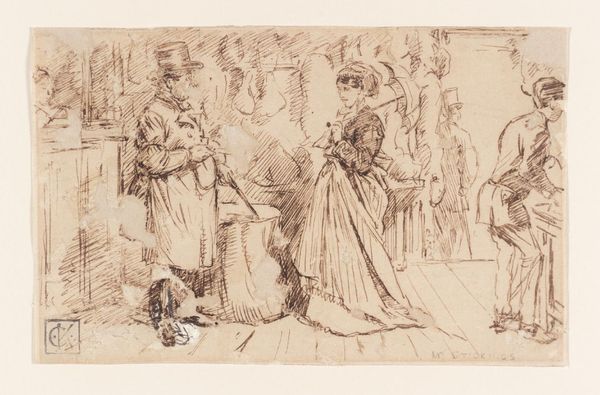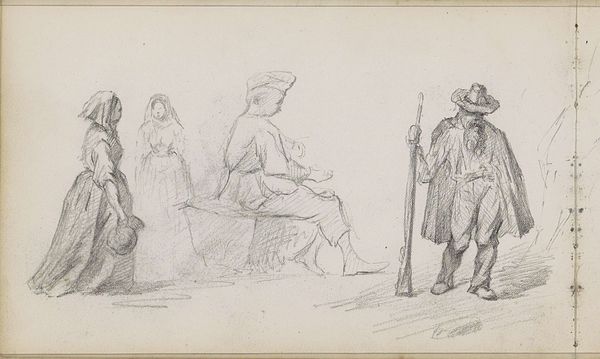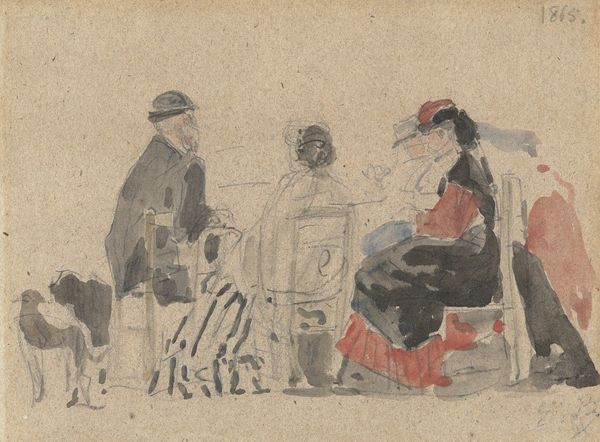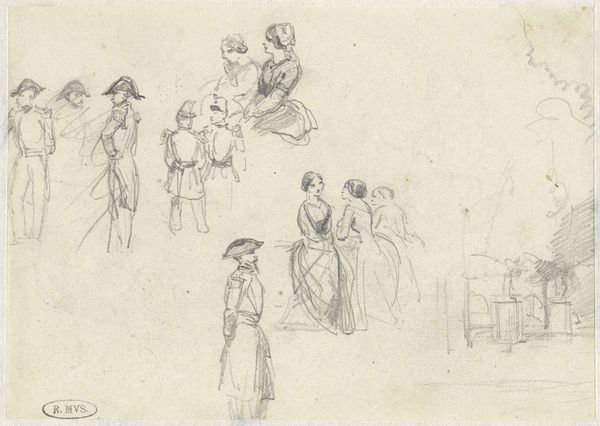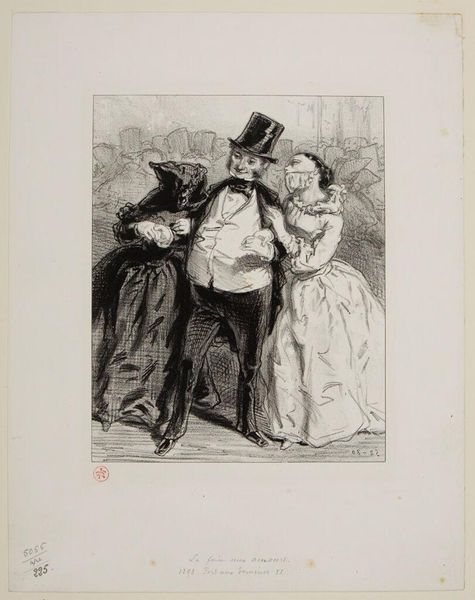
drawing, plein-air, paper, watercolor
#
drawing
#
impressionism
#
plein-air
#
landscape
#
charcoal drawing
#
figuration
#
paper
#
oil painting
#
watercolor
#
genre-painting
#
watercolor
Dimensions: 26 x 16 cm
Copyright: Public domain
Curator: Eugène Boudin's work, "The Beach at Trouville," presents a fascinating glimpse into leisure and society. I am drawn to the artist's use of watercolor to render this coastal scene. Editor: It feels somewhat melancholic, doesn’t it? Despite being at the beach, there's a formality and a separation between the figures. I am also captivated by the sketch-like quality, like a stolen moment. Curator: Absolutely, the composition’s reliance on line and color invites analysis. Note how the parasols and figures are delineated—Boudin utilizes contour lines to capture the ephemeral essence of a fleeting scene. This aligns with Impressionist ideals despite some unfinished aspects. Editor: This resonates with me as well! But what is this tableau implying about 19th-century societal structure? Observe how people maintain certain appearances even in a space of supposed relaxation. Are we seeing the constraints placed upon women, their identities concealed beneath layers of fabric? Curator: You raise intriguing points! We should also note the materiality—Boudin’s rapid brushstrokes emphasize the play of light upon surfaces and figures. It is all captured by subtle modulations of tone in washes. These were probably composed on site, en plein air. Editor: And aren’t such artistic choices indicative of changing power dynamics? Art was beginning to explore the nuances of ordinary lives outside officialdom’s dictates. Consider the artist’s commitment to portray modern life with accuracy. It speaks volumes! Boudin subverts elitist ideals by honoring everyday subjects with artistry. Curator: I see your point, and can concede how technique is never neutral. However, these more philosophical avenues should also take note that the loose rendering of details prioritizes sensation. Consider also how its success resides with the effective formal vocabulary on display. Editor: It's undeniable that “The Beach at Trouville" encapsulates broader cultural currents; art engaged with challenging traditional forms to confront reality during transformations of modernization. It’s that tension that interests me most! Curator: The enduring appeal then of “The Beach at Trouville” by Boudin lies in its intersectional narrative. It engages artistic skill to subtly negotiate boundaries, to speak to an era caught amid rapid change. Editor: Yes! Beyond form alone, and as an index of evolving consciousness too—making for so many layers.
Comments
No comments
Be the first to comment and join the conversation on the ultimate creative platform.
